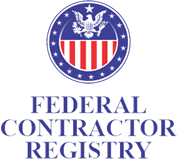AUSTIN, Texas – The federal disaster declaration has been expanded to include Individual Assistance for 20 more counties as a result of the severe storms, tornadoes, straight-line winds and flooding that began May 4, according to the Texas Division of Emergency Management (TDEM) and the Federal Emergency Management Agency (FEMA).
The 20 Texas counties newly designated for Individual Assistance are: Bastrop, Blanco, Caldwell, Denton, Eastland, Fort Bend, Gaines, Guadalupe, Henderson, Hidalgo, Johnson, Milam, Montague, Navarro, Rusk, Smith, Travis, Wichita, Williamson and Wise. The initial three counties—Harris, Hays and Van Zandt—were previously designated for assistance under the federal disaster declaration of May 29.
Disaster assistance for homeowners and renters may include grants to help pay for rent, temporary housing and home repairs, as well as other serious disaster-related needs, such as medical and dental expenses or funeral and burial costs.
Low-interest disaster loans from the U.S. Small Business Administration (SBA) also are available. SBA helps businesses of all sizes, private non-profit organizations, homeowners and renters fund repairs or rebuilding efforts and cover the cost of replacing lost or disaster-damaged personal property. These disaster loans cover losses not fully compensated by insurance or other recoveries and do not duplicate benefits of other agencies or organizations.
Texans who had storm damage should register with FEMA even if they have insurance. FEMA cannot duplicate insurance payments, but under-insured applicants may receive help after their insurance claims have been settled.
Residents and business owners should apply right away with SBA as part of the overall federal disaster recovery process, and not wait for insurance claims to settle.
People can apply for FEMA assistance online at www.DisasterAssistance.gov or via smartphone or web-enabled device at m.fema.gov. Applicants may also call 800-621-3362 or (TTY) 800-462-7585 from 6 a.m. to 9 p.m. (CT). Multilingual operators are available.
###
Disaster recovery assistance is available without regard to race, color, religion, nationality, sex, age, disability, English proficiency or economic status. If you or someone you know has been discriminated against, call FEMA toll-free at 800-621-FEMA (3362). For TTY call 800-462-7585.
FEMA’s mission is to support our citizens and first responders to ensure that as a nation we work together to build, sustain, and improve our capability to prepare for, protect against, respond to, recover from, and mitigate all hazards. Follow us on Twitter at https://twitter.com/femaregion6 and the FEMA Blog at http://blog.fema.gov.
The SBA is the federal government’s primary source of money for the long-term rebuilding of disaster-damaged private property. SBA helps businesses of all sizes, private non-profit organizations, homeowners and renters fund repairs or rebuilding efforts and cover the cost of replacing lost or disaster-damaged personal property. These disaster loans cover losses not fully compensated by insurance or other recoveries and do not duplicate benefits of other agencies or organizations. For more information, applicants may contact SBA’s Disaster Assistance Customer Service Center by calling (800) 659-2955, emailing disastercustomerservice@sba.gov, or visiting SBA’s website at www.sba.gov/disaster. Deaf and hard-of-hearing individuals may call (800) 877-8339.
Link:
Texans in 20 More Counties May Now Apply for Federal Disaster Assistance


